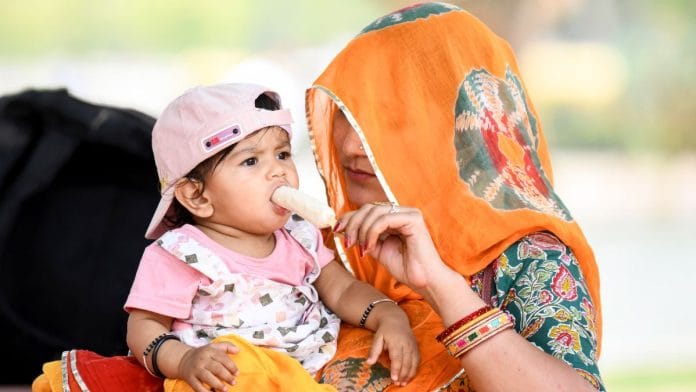My mother didn’t just cook; she created it. She was the original DIY queen, long before Pinterest got its algorithmic hands on the idea. She made things. Made them from scratch.
Soap? Made it. Foot cream? Of course. She mixed wax and her beloved kadwa tel (mustard oil) into a thick, healing salve for a friend’s cracked heels. Thousands of wicks for the puja diyas, all cut to identical size, lined up with military precision. Mukhwaas that tasted exactly like Pan Parag? The guests were thrilled; we were mildly suspicious.
One day, out of nowhere, she presented us with homemade Anardana churan, like a magician pulling a trick from her sari pallu. Nankhatais stamped with a ‘T’, the first letter of her name, Tara, were a constant in the kitchen. She could pickle jackfruit, guava, plum. If it grew, she could pickle it.
She even once hand-crafted a 200-piece jigsaw puzzle for us from cardboard and a magazine poster, just because she could. We laughed and squabbled over it for days.
I used to joke that one day she’d start producing steel like JRD Tata! In the 1980s, restaurant dinners were rare, precious events. But within days of eating out, Amma would decode and recreate the dish at home: better, bolder, more customised to our liking.
Cassata ice cream? She nailed that too, layering as if she’d done it for years.
She sewed our clothes, embroidered my frocks, and knitted sweaters that looked straight out of an expensive store.
And the stories. Oh, the stories she weaved… that was her other magic trick.
Some nights, we’d gather around her, and she’d weave vivid tales of her childhood in Bhimtal, a quiet mountain village where she was the eldest daughter in a sprawling household. Her Dadi, she said, treated her like royalty.
My favorite story? The time she and her sister smuggled a needle and thread into their village school and, very professionally, according to her, pierced the earlobes of their classmates behind the teacher’s back. Of course, the teacher snitched to her grandfather. But she recounted it like it was a heist movie.
Last year, we took her back to Bhimtal, her first visit in decades. For five whole days, she radiated joy. She showed me the house she grew up in, the tree she used to hide behind, the Shiva temple where she once prayed desperately for a passing grade in math.
But as she spoke, I caught the gaps: little inconsistencies in the stories I knew by heart, places she had embroidered the truth, patched memories together to make them sing for us. In that moment, I felt betrayed. Now at 53 I feel that it was her gift.
We prayed together in her ancient Dadi’s old pooja room.
It was exactly four months after that trip that she passed away. We lost her to multiple myeloma.
Sometimes, I wonder if working with your hands brings happiness. The way we infuse creativity into daily life, maybe it’s directly tied to how happy we are. Once, I asked her if she did not get bored of embroidery? It was so repetitive and slow .
She looked up, smiled, and said, “It’s meditative; knots and stitches turn into flowers. And it brings me delight.”
Of course, she wasn’t completely untouched by the smartphone era. WhatsApp messages, videos, reels, they began to claim pieces of her time too.
But when she was ill, and her hands could no longer keep up with her restless spirit, YouTube videos kept her company.
To this day, my tongue remembers the taste of those chewy amla candies, dried mango slices, and syrupy pineapple bits.
My childhood wasn’t just lived. It was handcrafted, down to the last thread.
That scourge, multiple myeloma, got her bones first; then her lungs. She tried, even in those days, to make diya wicks. But her fingers no longer obeyed.
The dexterity that had once turned cotton into perfect wicks had deserted her.
“I’ll try again tomorrow,” she would mumble, as if tomorrow could be reasoned with. It only got worse.
And without the small rituals of her day, cutting, stirring, kneading, tying, she seemed to dissolve. A pale shadow of herself, suspended in waiting.
It was painful to watch. Not just because of the illness, but because her hands no longer moved the way they used to just 4 months back.
It made me think: do we ever prepare ourselves for a time when the things that make us feel like ourselves begin to slip beyond reach?
Most of us aren’t. We aren’t ready to be helped with the smallest acts, tying a knot, turning a page, lifting a glass.
What a strange and wretched thing life can seem then, when it is stripped of its doing. What, then, defines it?
Is that even a real question, or just one that language allows us to ask?
Still, if there is an answer, it lies somewhere in the work we do. Not in achievement, but in effort. Not in grand gestures, but in the ordinary magic of creation.
In this way a simple act, a wick, a pickle, a darned shawl, can become a thread tying us to our little world.
My mother didn’t just make things. She made a life. And in doing so, she gave us ours.
These pieces are being published as they have been received – they have not been edited/fact-checked by ThePrint.


